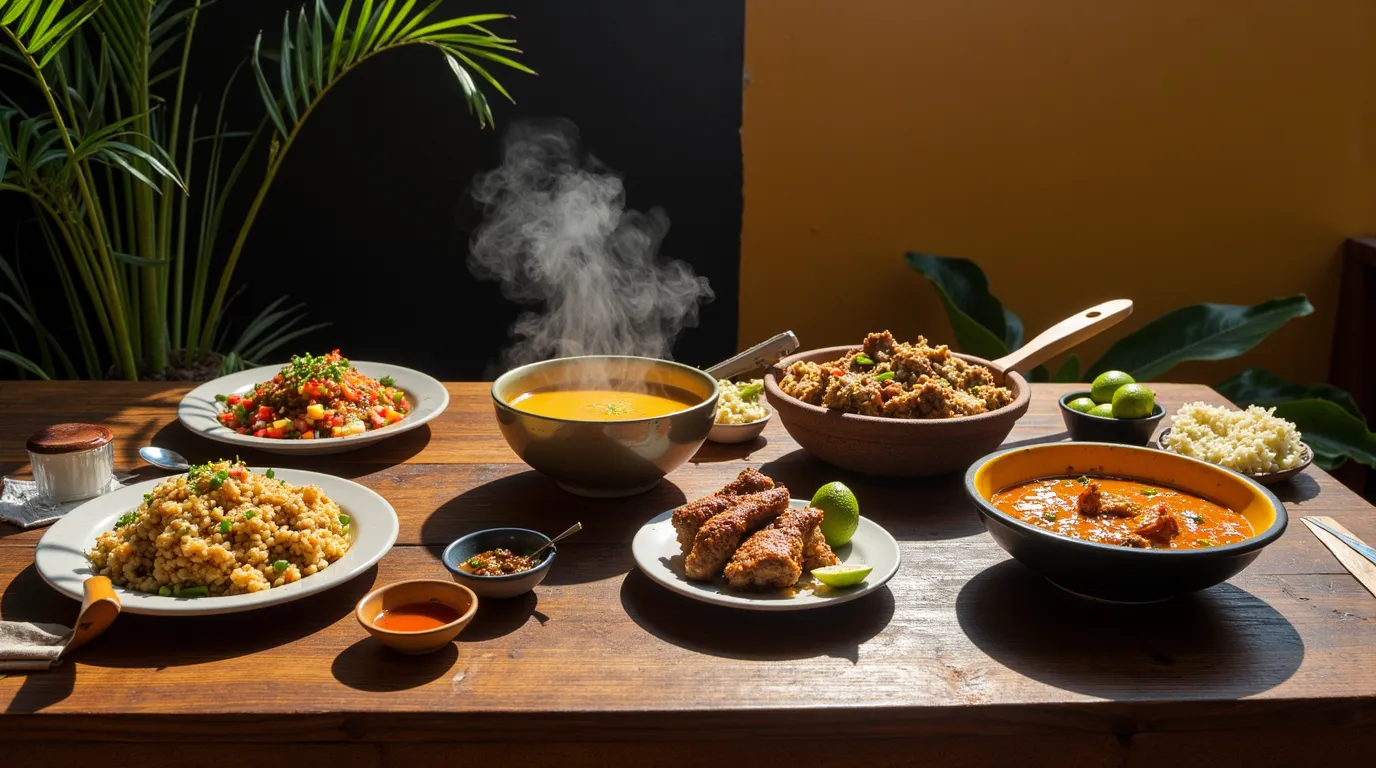Table of Contents
Table of Contents
Introduction
Haitian cuisine is a tapestry of bold flavors, rich cultural influences, and time-honored cooking techniques that reflect the island nation’s complex history. From spicy stews simmered with tropical produce to fragrant rice dishes accompanied by fresh, local ingredients, Haitian cuisine offers a unique gastronomic journey that both celebrates and preserves the country’s heritage. For centuries, the Haitian people have passed down recipes from one generation to the next, often through oral tradition, ensuring that the robust flavors and soulful cooking methods remain integral to everyday life.
In this article, we will delve deep into the world of Haitian cuisine, exploring its historical, cultural, and geographical influences. We will also look at the key ingredients that define its dishes, discuss the must-try traditional fare, and take note of modern twists and fusion styles emerging in Haitian gastronomy today. Whether you are a curious foodie seeking new taste sensations or a culinary enthusiast eager to replicate these hearty dishes at home, this guide aims to be a comprehensive resource. By the end, you will have gained a thorough understanding of Haitian cuisine, ready to appreciate both the traditional and the contemporary dimensions of this remarkable culinary heritage.
Culinary Context and History
The Evolution of Haitian Cuisine Over Time
The story of Haitian cuisine is deeply intertwined with the island’s history. Before the arrival of Europeans, the indigenous Taíno people cultivated root vegetables, such as cassava and sweet potatoes, and complemented their diet with fruits, fish, and small game. They employed basic but effective cooking techniques, often grilling or boiling foods in clay pots. This culinary foundation laid the groundwork for some of the island’s earliest and simplest meals.
With the arrival of Christopher Columbus and subsequent Spanish colonization, the gastronomic landscape of the island—once called Hispaniola—was forever altered. During this colonial period, wheat, livestock (cattle, goats, poultry), onions, and other foreign produce were introduced, gradually merging with native ingredients. Shortly thereafter, the French took control of the western part of Hispaniola, which eventually became Saint-Domingue (now Haiti). During the 17th and 18th centuries, enslaved Africans were forcibly brought to the colony to work primarily on sugarcane and coffee plantations. They, too, brought their cooking techniques, spices, and ingredients, notably okra and various leafy greens.
Over time, the melding of African, French, Taíno, and Spanish influences resulted in a unique and distinctive Haitian cuisine. Post-independence (in 1804), the Haitian people continued to rely on a blend of African heritage and French culinary traditions. Although the country faced numerous challenges—political unrest, economic instability, and environmental struggles—Haitian cuisine continued to evolve, adapt, and thrive. Recipes changed incrementally based on availability of ingredients and shifts in agricultural production, but the underlying cultural elements remained firmly intact.
Historical, Cultural, and Geographical Influences
Haiti’s location in the Caribbean basin has also contributed significantly to its gastronomy. The island’s tropical climate is ideal for growing many fruits (mangoes, papayas, pineapples, guavas) and vegetables. Meanwhile, the Caribbean Sea surrounding Haiti provides a variety of fish and seafood, enhancing local diets with fresh catches. Trade relationships with neighboring islands and other nations, such as the Dominican Republic, Cuba, and the United States, introduced additional products like cornmeal, refined flours, beans, and new spices.
Culturally, Haiti’s mixed African and European heritage resonates in the food. African influence is most evident in the use of root vegetables, plantains, legumes, and bold spice blends. French influence is seen in the refined sauces, pastries, and use of certain cooking techniques (e.g., braising, marinating, flambéing). The Roman Catholic tradition brought by French colonists also influenced certain holiday feasts, while Vodou traditions, practiced by many Haitians, incorporate specific rituals, offerings, and dishes that are deeply symbolic.
Major Events and Key Periods
Colonization and Slavery: Spanish and French colonization as well as the transatlantic slave trade introduced foreign ingredients and drastically altered local food consumption patterns. African slaves’ culinary practices significantly shaped Haiti’s unique seasoning blends and cooking methods.
Haitian Revolution and Independence: After Haiti gained independence in 1804, homegrown agriculture became an even stronger focus. Despite economic turmoil and political instability, Haitian cuisine remained resilient, its mainstays passed down through families.
Trade Exchanges: Over time, Haiti has traded actively with regional and international partners. These interactions not only brought new ingredients but also enriched cooking techniques, especially from neighboring islands. Although limited economic means constrained the population to local, affordable produce, a certain inventiveness emerged, giving Haitian dishes a flavor profile that stands out across the Caribbean.
Regional Variations
Though Haiti is a relatively small country, there are notable regional differences in Haitian cuisine. In the north, for instance, fresh seafood is abundant due to its proximity to the Atlantic waters, and many dishes feature salt cod or other fish. The northern provinces are also known for their adaptation of French-influenced cooking styles, possibly due to deeper historical interactions with French colonists in that region.
In the south, you will find hearty meat-based stews and a wider variety of tropical fruits. The southern region’s fertile plains and rainforest areas also encourage a cuisine rich in root vegetables and tubers, with a heavier accent on local produce.
The coastal west region, which includes the capital Port-au-Prince, is a melting pot of national influences. Here, you are likely to encounter the most diverse range of Haitian cuisine, from street foods that highlight African roots to refined restaurants that serve modern fusion dishes.
On the eastern border shared with the Dominican Republic, Haitian cuisine sometimes incorporates subtle Dominican influences, such as the occasional use of sofrito-like seasoning or Spanish-inspired rice dishes. These border regions often see a free flow of ingredients, especially in local markets.
Overall, these regional differences in Haitian cuisine are subtler than in larger countries, but they add delightful nuances and underscore the richness and adaptability of Haiti’s gastronomic heritage.
Key Ingredients and Local Products
Emblematic Foods
Haitian cuisine is renowned for its distinctive blend of spices and fresh produce. Some of the most emblematic foods include:
Plantains (Bannann): Green or ripe plantains are a staple, served fried, boiled, or mashed (as in bannann peze or bannann bouyi). They are an essential carbohydrate in many Haitian households.
Rice and Beans (Diri ak Pwa): Rice and bean-based dishes are ubiquitous. Haitian black rice (diri djon djon) is particularly iconic, made with a special type of dried black mushroom that lends color and flavor.
Griot (Griyo): Juicy chunks of marinated pork that are first simmered, then fried to perfection. Griot is often served with pikliz (spicy pickled vegetables) and fried plantains.
Spice Blends and Marinades (Épis): A fragrant mix of herbs, peppers, onions, garlic, and other seasonings. Épis is the base of many Haitian dishes, giving them their distinctive aroma and taste.
Root Vegetables: Cassava (yuca), malanga (taro), and sweet potatoes are widely consumed, used in soups or as sides.
Tropical Fruits: Mangos (Haiti’s national fruit) come in many varieties. Papayas, guavas, bananas, and pineapples are also key sources of sweetness in Haitian cuisine.
Seafood: Along the coasts, dishes often feature fish, lobster, and shellfish. Salt cod (morue) is another common ingredient, sometimes prepared with stewed vegetables and spices.
Seasonality and Its Impact
With a tropical climate, Haiti’s produce is relatively consistent year-round. However, fruits like mango, papaya, and melon do have peak seasons. During these times, local markets overflow with ripe, juicy selections that often find their way into both sweet and savory dishes. For example, in mango season, you will see an abundance of mangoes served fresh or turned into sauces and chutneys. Root vegetables, plantains, and beans are more or less available year-round, ensuring consistency in staple Haitian cuisine dishes.
Purchasing Tips
If you are looking to recreate Haitian cuisine at home, some essential ingredients may require a little effort to find, depending on where you live:
Local Markets: Seek out Caribbean or Latin American markets for items like plantains, scotch bonnet peppers, malanga, and specialty items such as djon djon mushrooms.
Specialty Stores or Online: Specialty spice stores or online retailers may carry Haitian hot sauces, pikliz, or the dried black mushrooms essential for diri djon djon. You can also find Haitian coffee or rum, which greatly enhance the dining experience.
Fresh Herbs and Spices: If you cannot find scotch bonnet peppers, try using habanero peppers with caution, as they are also quite spicy. For fresh herbs like thyme, parsley, and cilantro, local grocery stores often suffice. When it comes to epazote or other regional Caribbean herbs, checking an international market is recommended.
By sourcing the right ingredients, even individuals living far from the Caribbean can get a taste of authentic Haitian cuisine in their own kitchens.
Must-Try Traditional Dishes
Haitian Flagship Dishes
Several dishes stand out as icons of Haitian cuisine, each telling a story of resilience and cultural fusion. Here are some must-try examples:
Soup Joumou
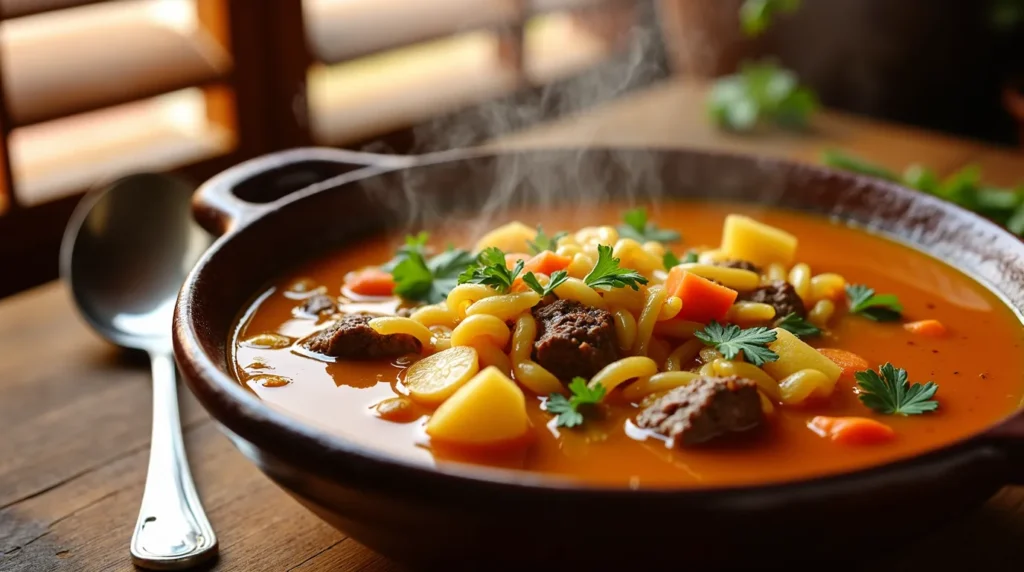
Traditionally served on January 1st—Haiti’s Independence Day—this pumpkin soup symbolizes freedom and unity. The soup features a rich broth made from squash (commonly known as joumou), beef, vegetables, and pasta. Seasoned with garlic, onions, and scotch bonnet peppers, it represents not just culinary heritage but also a historic victory, as enslaved Haitians were once forbidden from consuming this French delicacy.
Griot (Griyo)
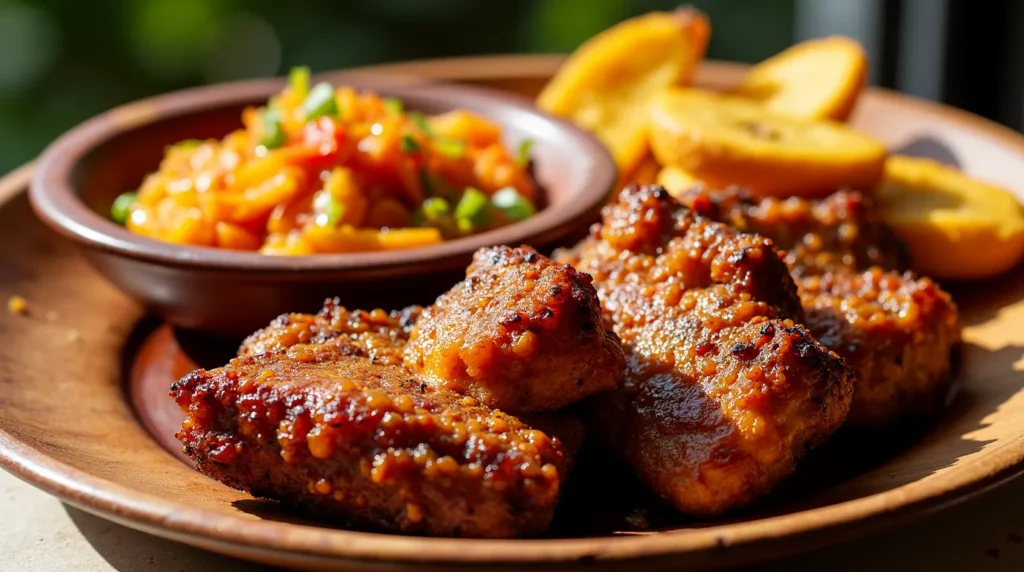
As mentioned earlier, griot is marinated pork that is simmered, then fried until crispy on the outside and tender on the inside. The marinade usually includes citrus juice (lime, sour orange), garlic, and epis. Served with fried plantains, pikliz (a tangy, spicy condiment of pickled cabbage, carrots, and peppers), and a generous helping of rice and beans, griot is often the centerpiece of Haitian social gatherings.
Tassot
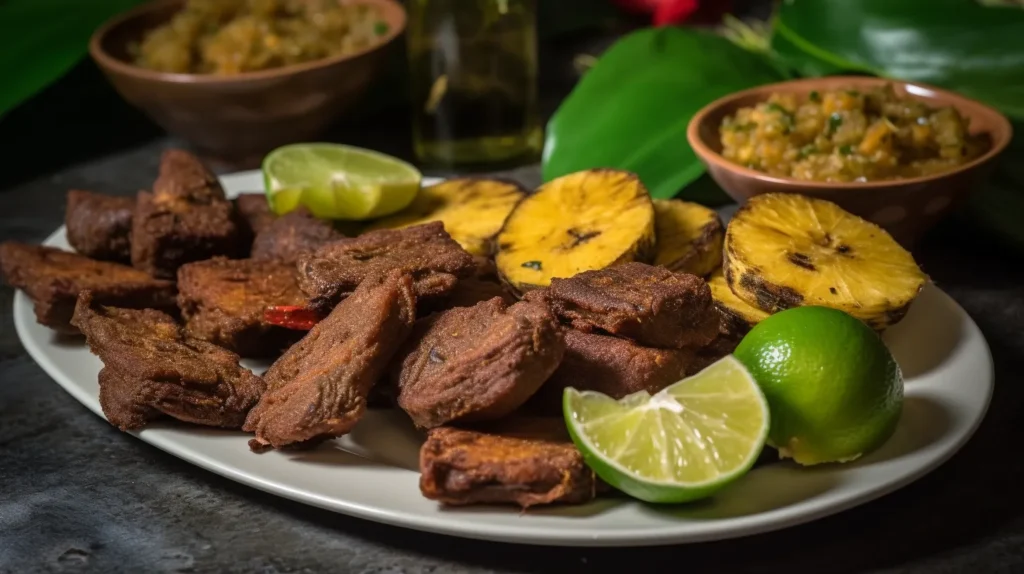
Another fried meat dish, tassot typically uses goat or beef. The meat is marinated similarly to griot, then fried to produce a slightly chewy, intensely flavorful dish. Served with fried plantains and pikliz, tassot shares a close kinship with griot, differing mainly in the choice of protein.
Legim
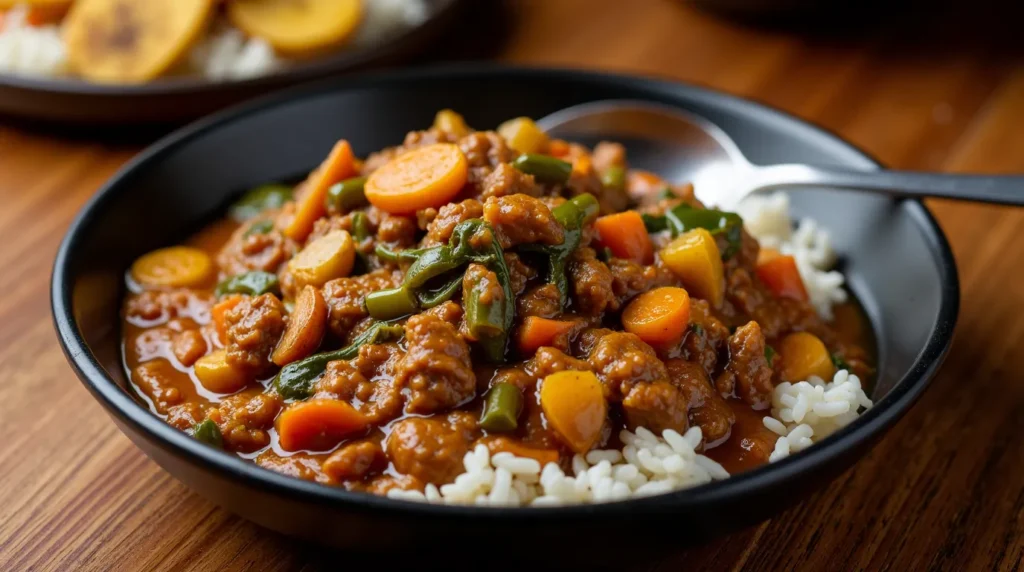
A hearty vegetable stew featuring eggplant, chayote squash, spinach, watercress, and sometimes meat. Legim is slow-cooked to a purée-like consistency, and it is a beautiful representation of the Haitian commitment to bold flavors enhanced by time-honored cooking methods.
Poul en Sos (Chicken in Sauce)
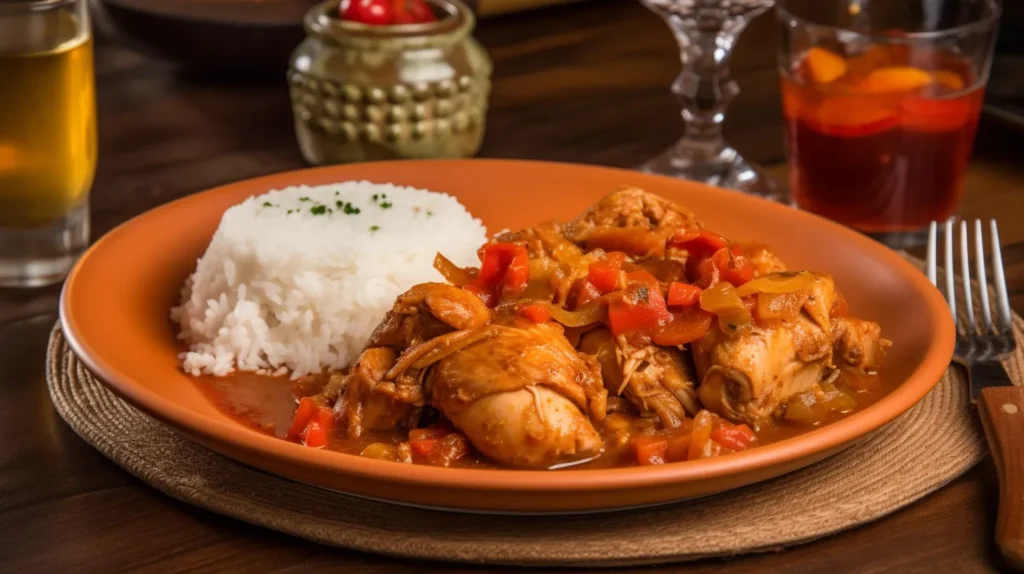
Haitian-style chicken stew is marinated in epis before being seared and then simmered in a flavorful tomato-based sauce. It’s served with rice, beans, and fried plantains for a complete, satisfying meal.
Simplified Recipes to Try at Home
Simple Griot Recipe
Ingredients:
2 lbs of pork shoulder (cut into medium-sized cubes)
Juice of 2 sour oranges (or 1 lime + 1 orange)
1 tablespoon of epis (or blend of parsley, thyme, garlic, scallions, and scotch bonnet)
Salt and pepper to taste
1 tablespoon of vegetable oil
1 cup of water
Instructions:
In a bowl, combine pork cubes, sour orange juice, epis, salt, and pepper. Let marinate for at least 2 hours (overnight for best results).
Transfer the marinated pork and marinade to a pot, add water, and bring to a simmer. Cover and cook until the pork is tender and the liquid is reduced (about 45–60 minutes).
Remove the pork from the pot. Heat vegetable oil in a separate pan and fry the pork pieces until they are crispy and browned on all sides.
Serve hot with pikliz, fried plantains, and your favorite rice dish.
Quick Pikliz
Ingredients:
2 cups of shredded cabbage
1 carrot, thinly sliced
1 onion, thinly sliced
1–2 scotch bonnet peppers, sliced (adjust for spiciness)
1 cup of white vinegar
1 teaspoon of salt
1 teaspoon of black pepper
Instructions:
In a glass jar, layer the cabbage, carrot, onion, and scotch bonnet peppers.
In a separate bowl, mix vinegar, salt, and pepper.
Pour the vinegar mixture over the vegetables, making sure they are fully submerged.
Seal and let sit in the refrigerator for at least 24 hours. The longer it sits, the more flavorful and spicy it becomes.
These two basic recipes illustrate how Haitian cuisine relies on bold seasoning and fresh ingredients. If you can master a solid marinade (epis) and understand how to balance heat, acid, and savory elements, you will be well on your way to crafting authentic Haitian dishes.
Regional Variations
When making these flagship dishes, don’t be surprised to find subtle variations from one household or region to another. Some cooks may use additional herbs in epis, others might add local vegetables to stew for a more personalized spin. For instance, in the northern part of Haiti, people might include salted herring or cod in Legim, while in the south, they might incorporate more tropical fruits or locally grown peppers for extra depth. These small changes reflect Haiti’s cultural mosaic and underscore the adaptability of Haitian cuisine.
Defining Characteristics of Haitian Cuisine
Haitian cuisine is often described as bold, spicy, and deeply aromatic. The use of peppers—especially scotch bonnet—lends a distinct heat, but this spiciness is usually balanced by tangy elements (citrus juices, vinegar) and a solid umami base from the meats, beans, and vegetables. Salty flavors come from the liberal use of salted meats and fish, like salted cod, while sweetness is occasionally introduced via caramelized onions, ripe plantains, or tropical fruits.
A defining characteristic of Haitian cuisine is its reliance on layered seasonings. Marinades are essential, often using thyme, garlic, shallots, onions, parsley, cloves, and peppers. Another cornerstone is the notion of extended cooking times: slow simmering and braising allow flavors to meld and intensify, yielding dishes that are deeply satisfying.
This robust flavor profile appeals to food enthusiasts seeking new culinary frontiers, especially those who appreciate the interplay of spicy, savory, tangy, and occasionally sweet elements. Haitian cuisine is often described as comfort food with a punch—satisfying and hearty, yet invigorating due to the bold seasonings. For anyone looking to expand their palate, Haitian cuisine promises an unforgettable experience where each bite tells a story of resilience, creativity, and cultural fusion.
Tips and Highlights to Encourage People to Try This Cuisine
Dive into the Culture: Haitian cuisine is more than just food on a plate—it is a vessel of cultural identity. Trying Haitian cuisine gives you a unique window into the country’s history and customs.
Celebrate Hospitality: Haitians are known for their warm hospitality, often inviting guests to share whatever meal they have at home. Experiencing Haitian cuisine in a community setting can be incredibly heartwarming.
Unlock Bold Flavors: If you love a bit of heat and rich tastes, Haitian cuisine will not disappoint. Even if you prefer milder flavors, you can adjust the spiciness to your liking while maintaining the characteristic depth of the dishes.
Learn the Story of Soup Joumou: On January 1st, many Haitians worldwide come together to enjoy Soup Joumou, a tradition that underscores the country’s hard-won independence. By partaking in this dish, you become part of a centuries-old narrative.
Experiment at Home: From griot to pikliz, Haitian recipes can be replicated in your own kitchen. This is a fun, practical way to learn about a new culture while honing your culinary skills.
Expand Your Palate: Haitian cuisine represents a crossroad of African, French, and indigenous Taíno influences. Its unique flavor combinations often surprise and delight first-time tasters, making it an excellent choice for adventurous foodies.
Table Rituals and Customs
Typical Meals
Breakfast: In many Haitian households, breakfast might consist of coffee (often Haitian coffee, which is strong and rich), bread with peanut butter, and fresh fruit. Another favorite morning dish is spaghetti prepared Haitian-style, cooked with hot dogs or salted cod, and seasoned with onions, peppers, and tomato paste.
Lunch: Often the heaviest meal of the day, lunch might include rice and beans, a stew (legim or sauce pois), and a portion of meat (chicken, pork, goat, or fish). Fried plantains frequently accompany the meal.
Dinner: Similar to lunch but usually lighter. Some might have soup or a simpler plate of leftovers, with a piece of fruit or a cup of hot chocolate to finish.
Aperitifs are not overly common in everyday Haitian life, but on special occasions or family gatherings, rum-based drinks or local beers might be served. An afternoon snack can be something as simple as fritay (fried street foods like plantain fritters or fried dough) from local vendors.
Table Etiquette and Local Traditions
Hospitality is Paramount: Haitian hosts take pride in feeding their guests well. It is considered polite for guests to accept at least a small portion of everything offered.
Utensils: Meals are generally eaten with utensils—forks, knives, and spoons—but certain street foods like patties (pate kòde) or fritters are typically eaten by hand.
Serving Style: Family-style serving is common, with dishes placed in the center of the table so everyone can help themselves. Elders and guests are usually served first as a sign of respect.
Gestures to Avoid: It is considered rude to waste food, so try to finish what is on your plate. Additionally, some families say a short prayer before meals to give thanks; it’s respectful to bow your head or remain silent during this moment.
National Holidays, Religious Events, and Family Celebrations
January 1st (Haitian Independence Day): The feast centers on Soup Joumou, symbolizing freedom. Families gather after attending church services to savor the soup together.
Carnival Season: Pre-Lenten festivities highlight street foods, including fried plantains, grilled meats, and sugary treats like dous makòs (a fudge-like confection made of milk and sugar).
Easter: Traditionally, fish becomes more prominent. Special Easter breads and buns might also be prepared in some regions.
Christmas and New Year: Apart from Soup Joumou on January 1st, the festive season involves cakes, Haitian hot chocolate, and elaborate family meals that feature baked ham, roasted turkey, or chicken with Haitian-style stuffing.
Family Gatherings: Birthdays, baptisms, and other milestones often involve a spread of Haitian favorites—griot, tassot, rice and beans, plantains, salads, and homemade cakes. These events highlight the communal spirit of Haitian culture, reinforcing the idea that food is a unifying force.
Modern Trends and Culinary Fusions
Evolving Through Contact with Other Gastronomies
Globalization and migration have inevitably brought fresh influences into Haitian cuisine. Haitian communities in the United States, Canada, and France have incorporated local elements, blending them with traditional recipes. For example, Haitian-American chefs might adapt recipes using locally sourced kale instead of traditional watercress or spin a fusion taco featuring griot or tassot as the main protein.
In Haiti’s urban areas, exposure to various global cuisines—Chinese, Lebanese, Italian—also leads to experiments. Chefs in Port-au-Prince and Jacmel, for instance, sometimes fuse Haitian flavors with international techniques, resulting in creative dishes like Haitian-style risotto featuring djon djon mushrooms or grilled seafood with an epis-infused beurre blanc sauce.
New Consumption Trends
Just as in other parts of the world, vegetarianism, veganism, and farm-to-table movements are slowly gaining ground among younger Haitians and urban professionals. Traditional Haitian cuisine, rich in vegetables, legumes, and grains, can easily accommodate these dietary choices. Legim, for instance, can be made vegetarian by omitting meat and focusing on the abundance of vegetables and greens.
Farm-to-table initiatives are also emerging, particularly in areas where small-scale farming has long been a cornerstone of the local economy. More Haitian restaurants and chefs are championing locally grown, organic produce, while some are revisiting ancestral farming practices that emphasize sustainability. This approach ensures that the future of Haitian cuisine remains closely tied to the land, preserving the environment and traditional farming techniques.
Young Chefs and Restaurateurs
A new wave of Haitian chefs is making a name for themselves both in Haiti and abroad. These innovators respect traditional recipes but also experiment with contemporary presentations, plating, and flavor combinations. They might serve legim in a deconstructed format or reinterpret Haitian patties with artisanal dough and gourmet fillings.
Such creativity broadens the appeal of Haitian cuisine to international gastronomes who may initially be unfamiliar with its rich history. These modern culinary ambassadors act as cultural bridges, presenting Haitian cuisine in elegant dining establishments, hip food trucks, or pop-up restaurants at festivals worldwide.
Conclusion and Call to Action
Haitian cuisine, with its vibrant tapestry of African, French, and indigenous influences, offers an incredible journey through history, culture, and flavor. Throughout this article, we have explored how Haitian cuisine developed from the pre-colonial era to modern times, revealing the key ingredients that define the nation’s most beloved dishes. We have delved into the must-try traditional recipes—griot, Soup Joumou, diri ak pwa—and showcased the remarkable regional variations that make Haiti’s gastronomic landscape so diverse. From table rituals to national celebrations, Haitian cuisine serves as a binding force that unites families and communities, demonstrating a warmth and hospitality that extends to any guest who sits at the table.
We have also seen how contemporary trends, including vegetarianism and farm-to-table movements, are beginning to shape the future of Haitian cuisine, led by a new generation of chefs who honor tradition while embracing innovation. If you are intrigued by bold, layered flavors, or if you are looking for a cuisine that tells a powerful historical story, Haitian cuisine is a must-try experience.
Now we invite you—our readers and fellow food enthusiasts—to share your own experiences with Haitian cuisine. Have you tried any of the iconic dishes at a Haitian restaurant in your city? Maybe you have a cherished family recipe passed down from Haitian relatives, or you found a modern take on griot at a food festival. Let us know your thoughts, favorite recipes, or any questions you might have about Haitian cuisine.
In a future article, we could explore the lesser-known desserts and confections of Haitian cuisine—like dous makòs, Haitian sweet potato pudding, and the fascinating range of tropical fruit preserves—to further whet your appetite. Until then, may your kitchen be filled with the aromas of epis, your table adorned with colorful Haitian dishes, and your heart warmed by the spirit of Haitian culinary tradition.

